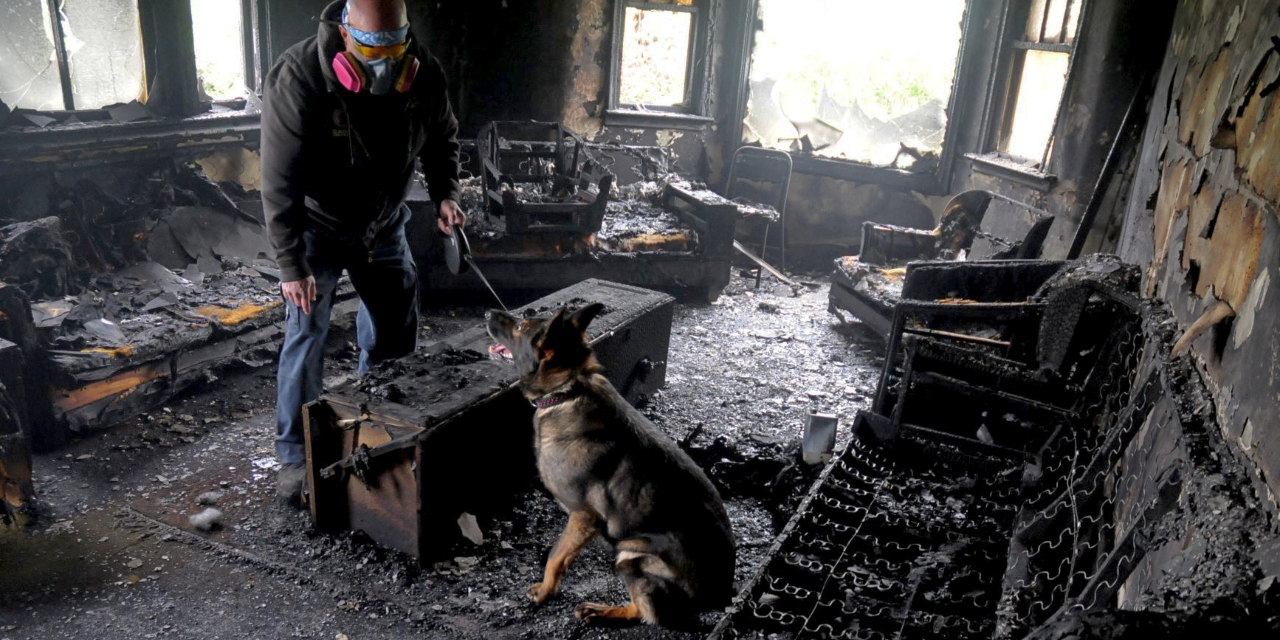In a study that has implications for arson investigations, University of Alberta chemists found trained dogs can detect fire accelerants such as gasoline in quantities as small as one billionth of a teaspoon.
"During an arson investigation, a dog may be used to identify debris that contains traces of ignitable liquids-which could support a hypothesis that a fire was the result of arson," explained Robin Abel, a graduate student in the Department of Chemistry and the lead author of the study.
"Of course, a dog cannot give testimony in court, so debris from where the dog indicated must be taken back to the laboratory and analyzed."
Abel said the estimate provides a target for forensic labs when processing evidence flagged by detection dogs at sites of potential arson.
The study involved two dog-and-handler teams. The first team was trained to detect a variety of ignitable liquids, while the other was trained mainly with gasoline. Results show the dog trained on a variety of liquids performed well at detecting all accelerants, while the dog trained on gasoline was not able to detect other accelerants at extremely low concentrations.
"The dogs in this study were able to detect down to one billionth of a teaspoon-or 5 picolitres-of gasoline," said U of A chemist James Harynuk, who supervised Abel's research. "Their noses are incredibly sensitive."
He added it's well known in the arson field that dogs are more sensitive than conventional laboratory tests.
"There have been many cases where a dog will flag debris that then tests negative in the lab. In order for us to improve laboratory techniques so they can match the performance of the dogs, we must first assess the dogs," said Harynuk.
"This work gives us a very challenging target to meet for our laboratory methods," he added.
The research was conducted in collaboration with Jeff Lunder, vice-president of the Canine Accelerant Detection Association (CADA) Fire Dogs, and funded by the Natural Sciences and Engineering Research Council of Canada.
The study, "A Novel Protocol for Producing Low-Abundance Targets to Characterize the Sensitivity Limits of Ignitable Liquid Detection Canines," was published in Forensic Chemistry.
